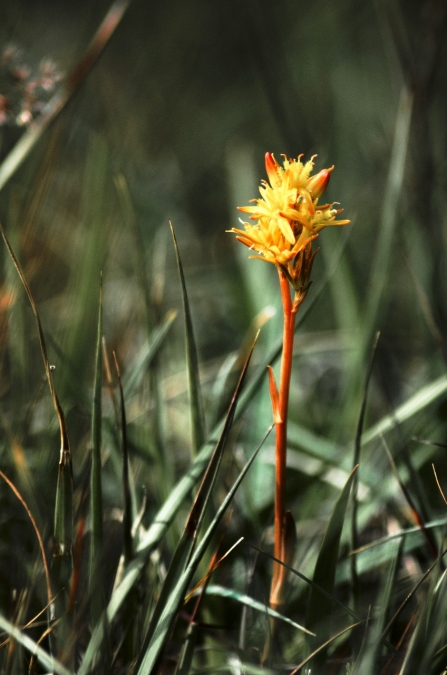
Ian Mcneish
©Philip Precey
Bog asphodel
The yellow, star-like flowers of bog asphodel brighten up our peat bogs, damp heaths and moors in early summer, attracting a range of pollinating insects.
Enw gwyddonol
Narthecium ossifragumPryd i'w gweld
June to SeptemberSpecies information
Ynghylch
The sulphur-yellow, star-like flowers of bog asphodel brighten up our browny-green peat bogs, damp heaths and moors in early summer. Borne on spikes, the flowers appear from June to August, and as they fruit in autumn, the plants turn deep orange, continuing to colour the bogs. Bog asphodel produces creeping rhizomes (underground stems) from which it can reproduce; however, it also produces seeds and its flowers attract a range of pollinating insects.Sut i'w hadnabod
Bog asphodel is unmistakeable when found on the damp, peaty soils it prefers. Look for the pyramidal flower spikes, which carry a dense cluster of yellow, open flowers with protruding, woolly, orange-tipped stamens. The leaves are narrow and set in a flattened fan around the stem. After it flowers, most of the plant turns orange in colour and reddish, egg-shaped fruits appear.Dosbarthiad
Locally common in the north and west of the UK, but scarcer in Central and Eastern England.Roeddech chi yn gwybod?
The Latin name of bog asphodel, ossifragum, literally translates as 'bone-breaker'. This unassuming plant acquired this violent name because it was believed that the livestock that grazed on it got brittle bones. However, it was actually the calcium-poor pastures that caused the problem.The Wildlife Trusts are working to restore and protect our heathlands by promoting good management, clearing encroaching scrub and implementing beneficial grazing regimes.

Ian Mcneish
